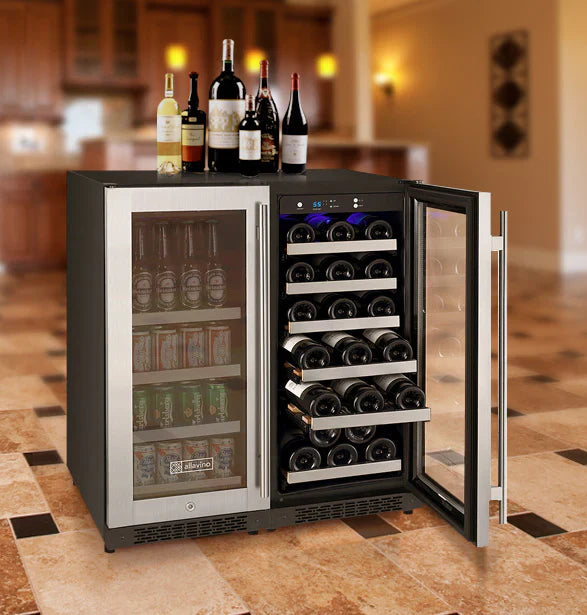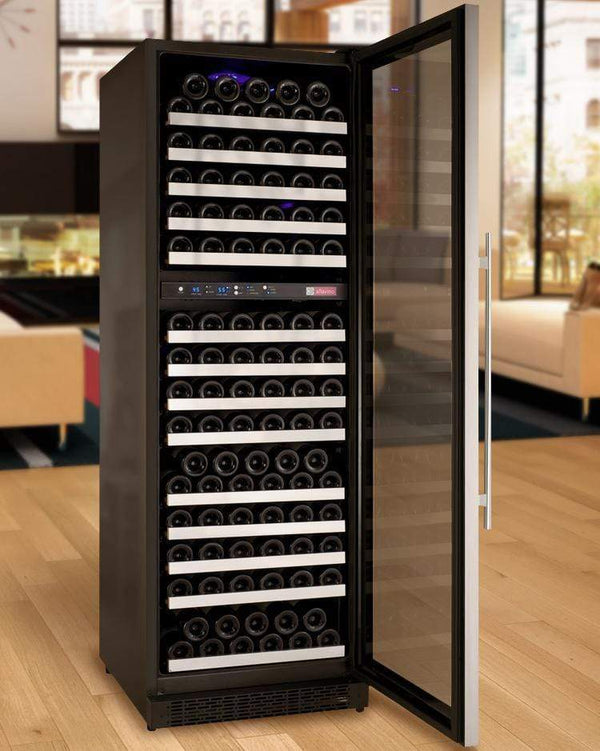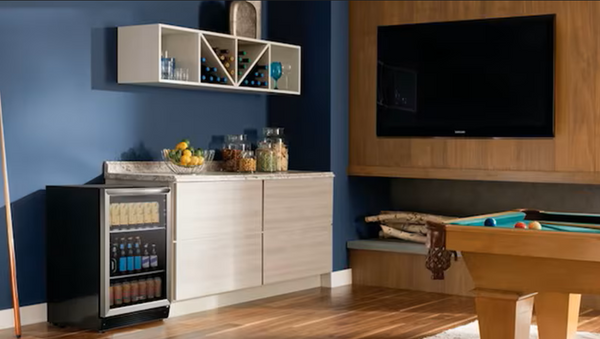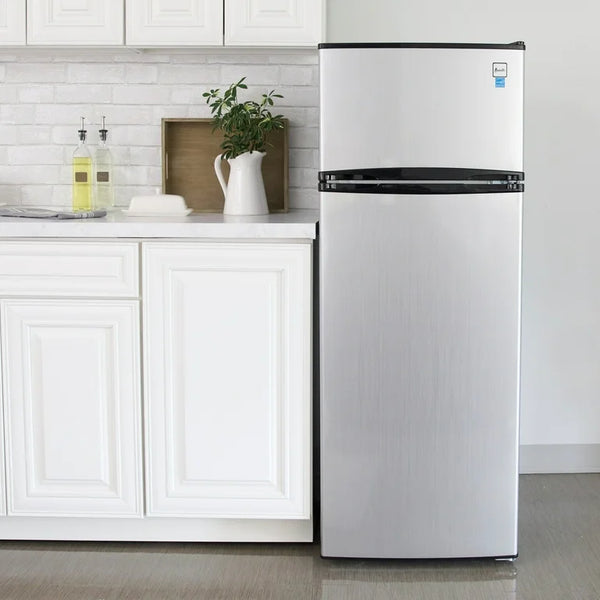Designing a Wine Cellar?
Let’s get it right.
Our specialists review your room layout, insulation, and heat load to recommend the correct cooling system for stable temperature and reliable climate control.
Comparing the Best Wine Cellar Cooling Units for Small Wine Cellars
Choosing the Best Wine Cellar Cooling Units for Small Spaces
By Jim Hopper, Wine Cooling Expert
Storing wine in a small space is both exciting and rewarding, but it comes with unique challenges. To preserve the quality of your collection, you need to maintain the right temperature and humidity—no matter how compact your cellar. The right cooling system ensures your wine ages gracefully and is always ready to enjoy.
Not sure where to start? This guide offers a comprehensive comparison of top wine cellar cooling units for small rooms, allowing you to select the best fit for your space and needs confidently. For a curated selection, explore our Small Wine Cellar Cooling Units collection. For a comprehensive overview of brands, types, and models, visit our Wine Cellar Cooling System Comparisons: Brands, Types & Models page.
Why Specialized Cooling Systems Matter

Standard air conditioners can’t provide the stable environment wine requires. They fluctuate in temperature, lack proper humidity control, and may circulate air too forcefully—leading to wine spoilage, mold, and label damage. Wine cooling systems are engineered to maintain the ideal 55°F and 50–70% humidity, protecting your investment bottle by bottle.
Key Considerations for Comparing Cooling Units

When evaluating cooling units for a small wine cellar, compare these factors:
- Room Size/Capacity: Match the unit’s cooling capacity (in cubic feet) to your cellar’s volume.
- Insulation & Vapor Barriers: Proper insulation and a vapor barrier are essential for consistent conditions and energy efficiency.
- Noise Level: Important if your cellar is near living areas or used for tastings.
- Installation: Some units are DIY-friendly; others require professional installation.
- Maintenance: Consider ease of access and routine care.
- Energy Efficiency: Efficient units conserve electricity and minimize your environmental impact.
- Customization: Some units offer flexible exhaust direction, power cord location, or color choices for unique layouts.
- Humidity Control: Look for built-in humidity management or monitoring to protect your wine.
Types of Small Wine Cellar Cooling Systems: Pros, Cons, and Best Uses
| Type | Pros | Cons | Best For |
|---|---|---|---|
| Through-the-Wall (Self-Contained) | Easy install, fits between wall studs, affordable | Generates some noise in cellar; venting is required | Home wine closets, small cellars |
| Fully-Ducted (Self-Contained) | Quiet in cellar, unit hidden from view | More complex install, requires ductwork | Noise-sensitive spaces, design-focused cellars |
| Split Ductless | Quiet operation in cellar, condenser heat/noise outside | Professional install required, higher cost | Small cellars near living spaces |
| Fully-Ducted Split | Silent and vibration-free, flexible placement | Most complex install, higher cost | High-end, silent cellars |
| Cabinet Cooling Systems | Precise control for very small spaces. Fits in cabinets | Limited capacity, not for standard cellars | Wine cabinets, very small enclosures |
Noise Tip:
Through-the-wall and ductless split systems generate some noise in the cellar, while fully ducted systems are best for noise-sensitive environments.
If you’re considering a self-contained system, explore our through-the-wall cooling units. For noise-sensitive or design-focused installations, see our ducted wine cellar cooling options. Interested in a split system for your compact cellar? Browse our split system wine cooling units.
Still deciding between ducted and ductless? Learn more in our Ductless vs Ducted Wine Cooling Units guide.
Side-by-Side Comparison: Top Small Wine Cellar Cooling Units
Below is a comparison table highlighting the key features of the most popular cooling units for small wine cellars (140–650 cu. ft.). Click the product name for more information or to make a purchase.
| Model | Capacity (cu. ft.) | Type | Noise | Humidity Control | DIY Install | Customizable | Standout Feature / Best For |
|---|---|---|---|---|---|---|---|
| WhisperKOOL SC PRO 3000 | Up to 650 | Through-the-wall | Low | Yes | Yes | Yes | Versatile, quiet, user-friendly |
| WhisperKOOL SC PRO 2000 | Up to 265 | Through-the-wall | Low | Yes | Yes | Yes | Compact, easy install |
| Breezaire WKCE 2200 | Cabinet/small | Cabinet | Moderate | Yes | Yes | Yes | Tight cabinetry, small enclosures |
| Breezaire WKCE 1060 | Up to 140 | Cabinet | Moderate | Yes | Yes | Yes | Smallest spaces, budget-friendly |
| WhisperKOOL Slimline LS | 300–650 | Through-the-wall | Low | Yes | Yes | Yes | Slim profile, above-door install |
| WhisperKOOL Platinum Mini Split | Up to 500 | Ductless split | Very Low | Yes | No | Yes | Silent operation, pro install |
| Breezaire WKL 2200 | Up to 265 | Through-the-wall | Low | Yes | Yes | Yes | Vibration-free, simple setup |
| Breezaire WKSL 2200 | Up to 265 | Split system | Very Low | Yes | No |
Want to see how top brands compare? Read our WhisperKOOL vs Other Wine Cellar Cooling Systems guide.
Detailed Comparison: Which Unit is Best for You?
1. WhisperKOOL SC PRO 3000
Best for versatile use, low noise, and easy installation up to 650 cu. ft. ft. Offers advanced features and fits most small to mid-sized cellars.
Compare with other top brands: WhisperKOOL vs Wine Guardian.
2. WhisperKOOL SC PRO 2000
Ideal for compact spaces needing reliable, easy-to-install cooling. Great for smaller rooms or wine closets.
3. Breezaire WKCE 2200 & 1060
Perfect for wine cabinets or very tight spaces. Stable humidity and customizable airflow for unique cabinetry.
Considering Breezaire vs CellarCool? See our comparison.
4. WhisperKOOL Slimline LS
Best for cellars where space above the door is available. Slim, unobtrusive, and quiet.
5. WhisperKOOL Platinum Mini Split
A great choice for silent operation in noise-sensitive spaces. Split system keeps noise and heat outside; professional install required.
Interested in split systems? Compare Breezaire WKSL 2200 vs WhisperKOOL Platinum Split 4000.
6. Breezaire WKL 2200
Simple, vibration-free operation in small cellars. Reliable, classic design.
7. Breezaire WKSL 2200
Flexible installation and ultra-quiet performance. Split system for advanced users.
8. WhisperKOOL Ceiling Mount Mini Split
Saves wall space and maximizes racking. Ceiling-mount design is unobtrusive and efficient.
9. CellarCool CX2200
Direct replacement of older units; anti-frost features. Easy to install and reliable for up to 265 cu. ft.
How to Choose the Right Cooling Unit for Your Small Cellar

- Calculate Room Size: Measure cubic footage (length × width × height).
- Assess Insulation & Vapor Barriers: Ensure everything is sealed and insulated.
- Match Capacity: Pick a unit rated above your measured space.
- Consider Noise & Placement: Decide if you need a quiet or hidden unit.
- Check Installation Needs: DIY or pro install? Any unique space constraints?
- Look for Customization: Will you need flexible exhaust or power cord placement?
- Consult Experts: Unsure? Reach out for a complimentary design consultation or expert advice.
Installation and Maintenance Tips

-
Installation:
Always follow manufacturer instructions. DIY-friendly options are available, but for split or ducted systems, professional installation is best. -
Routine Maintenance:
Clean filters and vents regularly, check for airflow blockages, and monitor temperature/humidity. Change filters as recommended. -
Professional Inspection:
Schedule annual inspections. Experts may use thermal imaging to spot insulation leaks or inefficiencies.
Conclusion

Choosing the right wine cellar cooling unit for your small cellar is crucial for protecting your collection and enjoying your wine at its best. Compare your options, measure carefully, and don’t hesitate to ask for help. With the right system in place, your wines will age beautifully and be ready to enjoy for years to come.
Need help choosing or installing your wine cooling system? Contact our expert for personalized advice and support. We’re here to help you create the perfect environment for your collection!
📚 Frequently Asked Questions (FAQs)
Can I use a portable air conditioner in a wine cellar?
How do I choose the right size wine cellar cooling unit?
What temperature should a wine cellar be kept at?
How can I keep my cellar cool in the summer?
How do I maintain my wine cellar cooling system?

Designing or Upgrading a Wine Cellar?
We got you! Here at Wine Coolers Empire, we will guide you in building your dream wine cellar.











